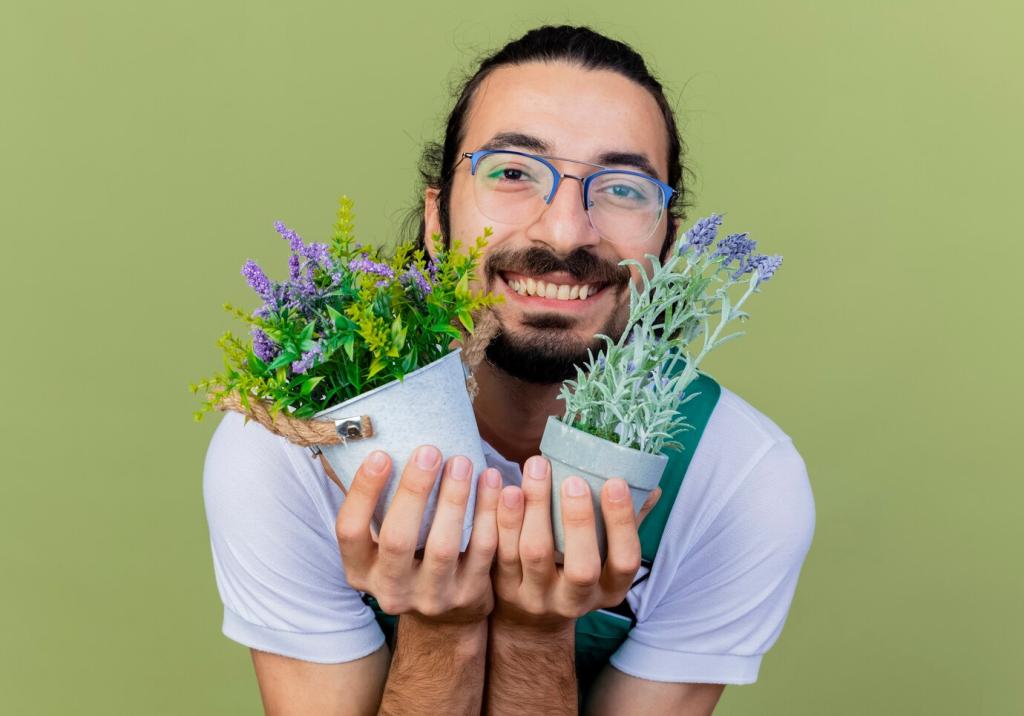Design Tips for a Plant-Friendly Home Environment
Creating a plant-friendly home environment is both art and science, balancing the beauty of interior design with the wellbeing of plants. Incorporating greenery into your living space can elevate the ambiance, purify the air, and introduce a sense of calm. Thoughtful placement, adequate light, suitable containers, and harmonious décor are key factors that ensure plants thrive while enhancing your home’s aesthetic. Explore the principles and practices that bring plants and design together seamlessly in your living space.
Previous
Next
Harmonizing Colors and Textures
Choosing plants and planters in harmony with your room’s color palette and textural variety turns greenery into purposeful décor. Deep green foliage can anchor neutral spaces, while variegated leaves offer visual interest against monochrome walls. Carefully selected planters made from ceramic, wood, or metal can emphasize a room’s character, from minimalist to rustic or contemporary. The interplay of leaf shapes and surface textures adds dimension, allowing your plant collections to accentuate and soften architectural lines or hard surfaces.
Creating Focal Points with Statement Plants
Strategically placed large or uniquely shaped plants make instant focal points, adding drama and structure to a room. A stately fiddle-leaf fig beside a sofa, or a cascading monstera in a bare corner, draws the eye and balances other design elements. Ensure your statement plant complements the scale of your furnishings. These visual anchors invite the rest of your décor to play around them, while their living textures ensure vibrancy and ongoing interest as they grow and change with the seasons.
Blending Plant Arrangements with Functional Zones
Incorporating plants into the various functional zones of your home—like reading nooks, kitchens, or entryways—integrates greenery into daily life. A line of herbs brightens a kitchen counter, while tranquil ferns soften a bedroom corner. Arrange clusters of small plants for intimacy in social spaces, or use vertical green walls to energize work areas. Purposefully blending plant arrangements with how you use each area ensures that plants add both practical benefits and aesthetic delight, supporting wellbeing and visual harmony.

Prioritizing Drainage and Plant Health
Plant containers must offer adequate drainage to prevent root rot, a common houseplant woe. Look for pots with drainage holes or use a cachepot method, where an inner plastic container sits inside a decorative outer pot. This combination allows for easy watering without compromising aesthetics. Selecting the right pot size is crucial: too large, and excess moisture can accumulate; too small, and roots may cramp. By prioritizing these aspects, you create an environment where roots are healthy, growth is vigorous, and maintenance is straightforward.
Matching Containers to Interior Style
The right container acts as a bridge between your plant and your overall décor. Sleek, matte planters suit modern minimalist rooms, while glazed ceramics and woven baskets echo bohemian or eclectic themes. Coordinating colors and shapes of planters with furniture or textiles makes plant displays look intentional and unified. Consider mixing materials—such as concrete pots with warm wood accents—to inject personality and sophistication. Reflecting your tastes through container choices connects your interior vision with the natural world you’re nurturing indoors.
Supporting Vines and Tall Plants Elegantly
Some plants need extra support as they grow, and choosing attractive support systems is part of thoughtful design. Elegant trellises, wooden stakes, or decorative plant stands provide necessary reinforcement while adding visual verticality to your space. Use shelving for trailing vines or macramé hangers to showcase cascading foliage at varying heights. By integrating supports seamlessly, you celebrate growth and ensure plants stay healthy and visually striking, all while keeping interiors ordered and refined.
